Energy Justice in Slum Rehabilitation Housing: An Empirical Exploration of Built Environment Effects on Socio-Cultural Energy Demand
Abstract
:1. Introduction
2. Background
2.1. Cultural Energy Services (3Cs) and Appliance Ownership
2.2. Built Environment and Its Influence on Cultural Energy Services
2.3. Built Environment and Energy Justice: Intersection of Sustainable Urban Planning and Energy Systems
3. Materials and Methods
3.1. Data Collection and Survey Design
3.2. Study Areas
3.2.1. Mumbai, India: Slum Rehabilitation Housing (SRH)
3.2.2. João Pessoa, Brazil: Gadanho and Timbó Social Housing (GTSH)
3.3. Empirical Analysis: Cultural Energy Services and Essential Built Environment Design Element in Slum Rehabilitation Housing
4. Results and Discussions
4.1. Appliance Ownership and Energy Culture in Slum Rehabilitation Housing of João Pessoa, Brazil, and Mumbai, India
4.2. Empirical Link between Cultural Energy Services and Built Environment Design Elements in the Slum Rehabilitation Housing of Brazil and India
5. Conclusions
- ▪
- The typology of the slum rehabilitation built environment can act as a critical control variable for distributive energy justice planning, as it influences the demand for cultural energy services and specific appliance ownership.
- ▪
- An appropriate socio-architectural design of the slum rehabilitation housing can support the local social networks through access to open spaces and well-ventilated areas. These variables are crucial for occupants’ demand for comfort, cleanliness, and convenience (3Cs) as energy services. Higher demand for the 3Cs can foster better eudemonic well-being in low-income urban populations (after [13]). Thus, translating the welfare effects of the 3Cs as distributive justice.
- ▪
- The empirical model showed that cultural energy services were demanded as a counter-response to the lack of appropriate socio-architectural design variables in the slum rehabilitation housing (SRH) of Mumbai, India, and João Pessoa, Brazil. However, the effects were different due to distinct building typologies. The SRH in Mumbai had a high-rise built form that had no provisioning of social and open spaces. Lack of privacy and safety was the main reason behind keeping windows closed for the most part of the day. It caused higher discomfort, leading to a rise in air conditioner ownership that increased the energy intensity of the households.
- ▪
- The SRH in Brazil had a low-rise built form with relatively better access to open spaces and walkable areas. However, it could not satisfy the socio-architectural needs of the occupants. The empirical model showed that most convenience appliances were owned due to this socio-architectural incompatibility. For example, a higher likelihood of washing machine ownership in the study area is linked to poor access to open and ventilated spaces. Such social spaces were used for communal washing and drying regimes, which was lost during slum rehabilitation planning.
- ▪
- Lack of privacy and safety were common concerns in both the SRHs, which also showed to have a higher likelihood of demand for convenience specific energy services. In Mumbai, it translated into higher AC ownership; thus, unaffordability of energy bills. Whereas, in Brazil, lack of such socio-architectural variables translated into a higher likelihood of microwave oven ownership, an energy-intensive convenience device.
Supplementary Materials
Author Contributions
Funding
Acknowledgments
Conflicts of Interest
Appendix A
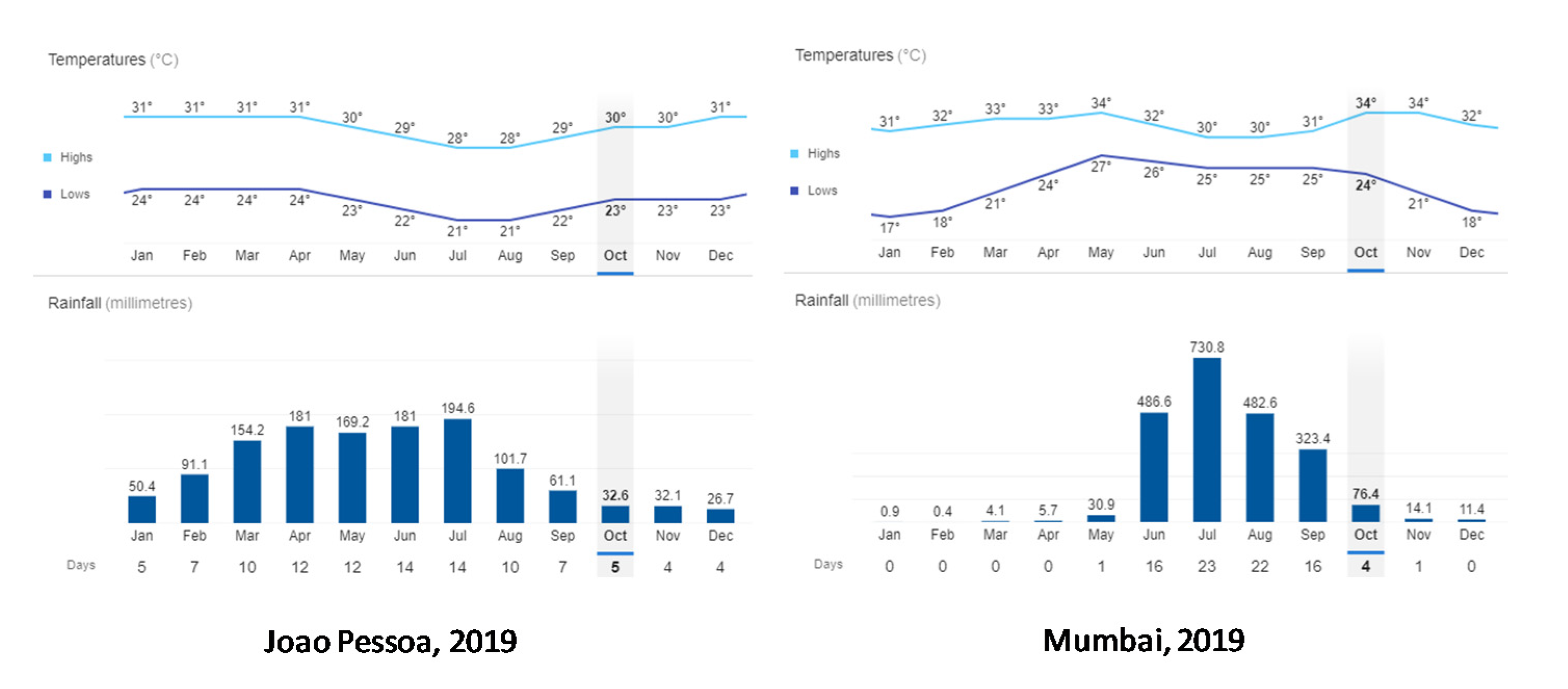
References
- Sovacool, B.K.; Dworkin, M.H. Global Energy Justice: Principles, Problem and Practices; Cambridge University Press: Cambridge, England, 2014; ISBN 9781107323605. [Google Scholar]
- Mebratu, D.; McCauley, D.; Sovacool, B.K.; Heffron, R.J.; Ramasar, V.; Mundaca, L. Energy justice in the transition to low carbon energy systems: Exploring key themes in interdisciplinary research. Appl. Energy 2018, 233–234, 916–921. [Google Scholar]
- National Research Council. Energy Use: The Human Dimension; Aronson, E., Stern, P., Eds.; The National Academies Press: Washington, DC, USA, 1984. [Google Scholar]
- Sovacool, B.K.; Dworkin, M.H. Energy justice: Conceptual insights and practical applications. Appl. Energy 2015, 142, 435–444. [Google Scholar] [CrossRef]
- Sovacool, B.K. The political economy of energy poverty: A review of key challenges. Energy Sustain. Dev. 2012, 16, 272–282. [Google Scholar] [CrossRef]
- Stephenson, J. Sustainability cultures and energy research: An actor-centred interpretation of cultural theory. Energy Res. Soc. Sci. 2018, 44, 242–249. [Google Scholar] [CrossRef]
- Day, R.; Walker, G.; Simcock, N. Conceptualising energy use and energy poverty using a capabilities framework. Energy Policy 2016, 93, 255–264. [Google Scholar] [CrossRef]
- Samarakoon, S. A justice and wellbeing centered framework for analysing energy poverty in the Global South. Ecol. Econ. 2019, 165, 106385. [Google Scholar] [CrossRef]
- Walker, G.; Simcock, N.; Day, R. Necessary energy uses and a minimum standard of living in the United Kingdom: Energy justice or escalating expectations? Energy Res. Soc. Sci. 2016, 18, 129–138. [Google Scholar] [CrossRef]
- Wilhite, H.; Lutzenheiser, L. Social loading and sustainable consumption. Adv. Consum. Res. 1998, 26, 281–287. [Google Scholar]
- Shove, E. Comfort, Cleanliness and Convenience: The Social Organization of Normality; BERG: Oxford, UK, 2003; ISBN 1859736254. [Google Scholar]
- Brand-Correa, L.I.; Martin-Ortega, J.; Steinberger, J.K. Human Scale Energy Services: Untangling a ‘golden thread’. Energy Res. Soc. Sci. 2018, 38, 178–187. [Google Scholar] [CrossRef]
- Sovacool, B.K. Conceptualizing urban household energy use: Climbing the “Energy Services Ladder”. Energy Policy 2011, 39, 1659–1668. [Google Scholar] [CrossRef]
- Debnath, R.; Bardhan, R.; Sunikka-Blank, M. Discomfort and distress in slum rehabilitation: Investigating a rebound phenomenon using a backcasting approach. Habitat Int. 2019, 87, 75–90. [Google Scholar] [CrossRef] [PubMed]
- Khosla, R.; Sircar, N.; Bhardwaj, A. Energy demand transitions and climate mitigation in low-income urban households in India. Environ. Res. Lett. 2019, 14, 095008. [Google Scholar] [CrossRef]
- Nijman, J. India’s Urban Future: Views From the Slum. Am. Behav. Sci. 2015, 59, 406–423. [Google Scholar] [CrossRef]
- Jones, P. Formalizing the informal: Understanding the position of informal settlements and slums in sustainable urbanization policies and strategies in Bandung, Indonesia. Sustainability 2017, 9, 1436. [Google Scholar] [CrossRef] [Green Version]
- Bardhan, R.; Debnath, R.; Jana, A.; Norford, L.K. Investigating the association of healthcare-seeking behavior with the freshness of indoor spaces in low-income tenement housing in Mumbai. Habitat Int. 2018, 71, 156–168. [Google Scholar] [CrossRef]
- Lueker, J.; Bardhan, R.; Sarkar, A.; Norford, L. Indoor air quality among Mumbai’s resettled populations: Comparing dharavi slum to nearby rehabilitation sites. Build. Environ. 2019, 167, 106419. [Google Scholar] [CrossRef]
- Debnath, R.; Bardhan, R.; Sunikka-Blank, M. How does slum rehabilitation influence appliance ownership? A structural model of non-income drivers. Energy Policy 2019, 132, 418–428. [Google Scholar] [CrossRef]
- Basu, S.E.; Bale, C.; Wehnert, T.; Topp, K. A complexity approach to defining urban energy systems. Cities 2019, 95, 102358. [Google Scholar] [CrossRef]
- Ozawa, M.; Chaplin, J.; Pollitt, M.; Reiner, D.; Warde, P. (Eds.) In Search of Good Energy Policy; Cambridge University Press: Cambridge, UK, 2019; ISBN 9781108639439. [Google Scholar]
- Malik, J.; Bardhan, R.; Banerji, P. Simulating the dynamics of occupant behaviour for thermal comfort in social housing. In Proceedings of Building Simulation 2019: 16th Conference of IBPSA; International Building Performance Association (IBPSA): Rome, Italy, 2019. [Google Scholar]
- Dhanaraj, S.; Mahambare, V.; Munjal, P. From Income to Household Welfare: Lessons from Refrigerator Ownership in India. J. Quant. Econ. 2018, 16, 573–588. [Google Scholar] [CrossRef]
- Johnson, O.W.; Gerber, V.; Muhoza, C. Gender, culture and energy transitions in rural Africa. Energy Res. Soc. Sci. 2019, 49, 169–179. [Google Scholar] [CrossRef]
- Khalid, R.; Sunikka-Blank, M. Homely social practices, uncanny electricity demands: Class, culture and material dynamics in Pakistan. Energy Res. Soc. Sci. 2017, 34, 122–131. [Google Scholar] [CrossRef]
- Shove, E.; Walker, G. What Is Energy For ? Social Practice and Energy Demand. Theory Cult. Soc. 2014, 31, 41–58. [Google Scholar] [CrossRef] [Green Version]
- Shove, E.; Pantzar, M.; Watson, M. The Dynamics of Social Practice: Everyday Life and How It Changes, 1st ed.; SAGE Publications Ltd.: London, UK, 2012; ISBN 9781446290033. [Google Scholar]
- Rao, N.D.; Ummel, K. White goods for white people? Drivers of electric appliance growth in emerging economies. Energy Res. Soc. Sci. 2017, 27, 106–116. [Google Scholar] [CrossRef] [Green Version]
- Cabeza, L.F.; Urge-Vorsatz, D.; McNeil, M.A.; Barreneche, C.; Serrano, S. Investigating greenhouse challenge from growing trends of electricity consumption through home appliances in buildings. Renew. Sustain. Energy Rev. 2014, 36, 188–193. [Google Scholar] [CrossRef]
- Ekholm, T.; Krey, V.; Pachauri, S.; Riahi, K. Determinants of household energy consumption in India. Energy Policy 2010, 38, 5696–5707. [Google Scholar] [CrossRef]
- Daioglou, V.; van Ruijven, B.J.; van Vuuren, D.P. Model projections for household energy use in developing countries. Energy 2012, 37, 601–615. [Google Scholar] [CrossRef] [Green Version]
- Van Der Kroon, B.; Brouwer, R.; Van Beukering, P.J.H. The energy ladder: Theoretical myth or empirical truth? Results from a meta-analysis. Renew. Sustain. Energy Rev. 2013, 20, 504–513. [Google Scholar] [CrossRef]
- Kowsari, R.; Zerriffi, H. Three dimensional energy profile: A conceptual framework for assessing household energy use. Energy Policy 2011, 39, 7505–7517. [Google Scholar] [CrossRef]
- Choumert-Nkolo, J.; Combes Motel, P.; Le Roux, L. Stacking up the ladder: A panel data analysis of Tanzanian household energy choices. World Dev. 2019, 115, 222–235. [Google Scholar] [CrossRef]
- Bisu, D.Y.; Kuhe, A.; Iortyer, H.A. Urban household cooking energy choice: An example of Bauchi metropolis, Nigeria. Energy. Sustain. Soc. 2016, 6, 1–12. [Google Scholar] [CrossRef] [Green Version]
- Bhide, A.; Monroy, C.R. Energy poverty: A special focus on energy poverty in India and renewable energy technologies. Renew. Sustain. Energy Rev. 2011, 15, 1057–1066. [Google Scholar] [CrossRef]
- Bisaga, I.; Parikh, P. To climb or not to climb? Investigating energy use behaviour among Solar Home System adopters through energy ladder and social practice lens. Energy Res. Soc. Sci. 2018, 44, 293–303. [Google Scholar] [CrossRef] [Green Version]
- Tiwari, P. Architectural, Demographic, and Economic Causes of Electricity Consumption in Bombay. J. Policy Model. 2000, 22, 81–98. [Google Scholar] [CrossRef]
- Pothitou, M.; Hanna, R.F.; Chalvatzis, K.J. ICT entertainment appliances’ impact on domestic electricity consumption. Renew. Sustain. Energy Rev. 2017, 69, 843–853. [Google Scholar] [CrossRef] [Green Version]
- Medrano-Gómez, L.E.; Izquierdo, A.E. Social housing retrofit: Improving energy efficiency and thermal comfort for the housing stock recovery in Mexico. Energy Procedia 2017, 121, 41–48. [Google Scholar] [CrossRef]
- Mesquita, L.; Ripper Kós, J. Towards more resilient and energy efficient social housing in Brazil. Energy Procedia 2017, 121, 65–70. [Google Scholar] [CrossRef]
- Sosa, M.B.; Correa, E.N.; Cantón, M.A. Neighborhood designs for low-density social housing energy efficiency: Case study of an arid city in Argentina. Energy Build. 2018, 168, 137–146. [Google Scholar] [CrossRef]
- Bardhan, R.; Debnath, R.; Malik, J.; Sarkar, A. Low-income housing layouts under socio-architectural complexities: A parametric study for sustainable slum rehabilitation. Sustain. Cities Soc. 2018, 41, 126–138. [Google Scholar] [CrossRef] [Green Version]
- Poruschi, L.; Ambrey, C.L. Energy justice, the built environment, and solar photovoltaic (PV) energy transitions in urban Australia: A dynamic panel data analysis. Energy Res. Soc. Sci. 2019, 48, 22–32. [Google Scholar] [CrossRef]
- Burton, E. Housing for an urban renaissance: Implications for social equity. Hous. Stud. 2003, 18, 537–562. [Google Scholar] [CrossRef]
- Bardhan, R.; Sarkar, S.; Jana, A.; Velaga, N.R. Mumbai slums since independence: Evaluating the policy outcomes. Habitat Int. 2015, 50, 1–11. [Google Scholar] [CrossRef]
- Byrne, J.; Ambrey, C.; Portanger, C.; Lo, A.; Matthews, T.; Baker, D.; Davison, A. Could urban greening mitigate suburban thermal inequity? The role of residents’ dispositions and household practices. Environ. Res. Lett. 2016, 11, 095014. [Google Scholar] [CrossRef]
- Zhou, S.; Noonan, D.S. Justice implications of clean energy policies and programs in the United States: A theoretical and empirical exploration. Sustainability 2019, 11, 807. [Google Scholar] [CrossRef] [Green Version]
- Chatterton, P. Towards an agenda for post-carbon cities: Lessons from lilac, the uk’s first ecological, affordable cohousing community. Int. J. Urban Reg. Res. 2013, 37, 1654–1674. [Google Scholar] [CrossRef] [Green Version]
- Sanchez, L.; Reames, T.G. Cooling Detroit: A socio-spatial analysis of equity in green roofs as an urban heat island mitigation strategy. Urban For. Urban Green. 2019, 44, 126331. [Google Scholar] [CrossRef]
- Josa, I.; Aguado, A. Infrastructures and society: From a literature review to a conceptual framework. J. Clean. Prod. 2019, 238, 117741. [Google Scholar] [CrossRef]
- Heffron, R.J.; McCauley, D.; de Rubens, G.Z. Balancing the energy trilemma through the Energy Justice Metric. Appl. Energy 2018, 229, 1191–1201. [Google Scholar] [CrossRef] [Green Version]
- Wilson, B.; Chakraborty, A. The environmental impacts of sprawl: Emergent themes from the past decade of planning research. Sustainability 2013, 5, 3302–3327. [Google Scholar] [CrossRef] [Green Version]
- Sunikka-Blank, M.; Bardhan, R.; Haque, A. Gender, domestic energy and design of inclusive low-income habitats: A case of slum rehabilitation housing in Mumbai. Energy Res. Soc. Sci. 2019, 49, 53–67. [Google Scholar] [CrossRef]
- UN-DESA. Designing Houshold Survey Samples: Practical Guidelines; UN-DESA: New York, NY, USA, 2005. [Google Scholar]
- Zhang, Y. Building a Slum-Free Mumbai. Available online: https://www.wilsoncenter.org/article/building-slum-free-mumbai (accessed on 7 February 2020).
- MaisPB City Hall Starts Building More 776 Houses in João Pessoa. Available online: https://www.maispb.com.br/8529/prefeitura-inicia-construcao-de-mais-776-moradias-em-joao-pessoa.html/amp (accessed on 7 October 2019).
- Simoes, G.M.F.; Leder, S.M. Space adaptations and the impact on user comfort in social interest houses. In Proceedings of the VII Encontro Nacional de Ergonomia do Ambiente Construído/VIII Seminário Brasileiro de Acessibilidade Integral; Blucher: Fortalenza, Brazi, 2018; pp. 956–967. [Google Scholar]
- Simoes, G.M.F. Comfort and Spatial and Individual Adaptation in Housing Developments of Social Interest: Study in João Pessoa-PB; Federal University of Paraiba: Paraiba, Brazil, 2018. [Google Scholar]
- Allison, P.D. Convergence failures in logistic regression. In Proceedings of the SAS Global Forum: Statistics and Data Analysis; SAS: San Antonio, TX, USA, 2008; pp. 1–12. [Google Scholar]
- Newsom, J. Sample Size and Estimation Problems with Logistic Regression. J. Comput. Appl. Math. 2016, 255, 743–752. [Google Scholar]
- Bush, S. Sample size determination for logistic regression: A simulation study. Commun. Stat. Comput. 2015, 44, 360–373. [Google Scholar] [CrossRef]
- Nemes, S.; Jonasson, J.M.; Genell, A.; Steineck, G. Bias in odds ratios by logistic regression modelling and sample size. BMC Med. Res. Methodol. 2009, 9, 1–5. [Google Scholar] [CrossRef] [PubMed] [Green Version]
- Hauck, W.; Donner, A. Wald’s Test as Applied to Hypotheses in Logit Analysis. J. Am. Stat. Assoc. 1977, 72, 851–853. [Google Scholar]
- Firth, D. Bias reduction of maximum likelihood estimates. Biometrika 1993, 82, 667. [Google Scholar] [CrossRef]
- Rahman, M.S.; Sultana, M. Performance of Firth-and logF-type penalized methods in risk prediction for small or sparse binary data. BMC Med. Res. Methodol. 2017, 17, 1–15. [Google Scholar] [CrossRef] [Green Version]
- Puhr, R.; Heinze, G.; Nold, M.; Lusa, L.; Geroldinger, A. Firth’s logistic regression with rare events: Accurate effect estimates and predictions? Stat. Med. 2017, 36, 2302–2317. [Google Scholar] [CrossRef]
- Heinze, G.; Ploner, M.; Dunkler, D.; Southworth, H. logistf: Firth’s Bias-Reduced Logistic Regression; CEMSIIS: Vienna, Austria, 2018. [Google Scholar]
- Ghisi, E.; Gosch, S.; Lamberts, R. Electricity end-uses in the residential sector of Brazil. Energy Policy 2007, 35, 4107–4120. [Google Scholar] [CrossRef]
- McAnany, E.G.; La Pastina, A.C. Telenovela Audiences: A Review and Methodological Critique of Latin America Research. Commun. Res. 1994, 21, 828–849. [Google Scholar] [CrossRef]
- Werneck, A.O.; Oyeyemi, A.L.; Szwarcwald, C.L.; Stubbs, B.; Silva, D.R. Potential influence of physical, psychological and lifestyle factors on the association between television viewing and depressive symptoms: A cross-sectional study. Gen. Hosp. Psychiatry 2019, 60, 37–43. [Google Scholar] [CrossRef]
- Scott, H.; Woods, H.C. Understanding Links Between Social Media Use, Sleep and Mental Health: Recent Progress and Current Challenges. Curr. Sleep Med. Rep. 2019, 5, 141–149. [Google Scholar] [CrossRef] [Green Version]
- Sullivan, E.; Ward, P.M. Sustainable housing applications and policies for low-income self-build and housing rehab. Habitat Int. 2012, 36, 312–323. [Google Scholar] [CrossRef]
- Bardhan, R.; Debnath, R. Towards daylight inclusive bye-law: Daylight as an energy saving route for affordable housing in India. Energy Sustain. Dev. 2016, 34, 1–9. [Google Scholar] [CrossRef]
- Sarkar, A.; Bardhan, R. Improved indoor environment through optimised ventilator and furniture positioning: A case of slum rehabilitation housing, Mumbai, India. Front. Archit. Res. 2020. [Google Scholar] [CrossRef]
- Indraganti, M.; Lee, J.; Zhang, H.; Arens, E.A. Thermal adaptation and insulation opportunities provided by different drapes of Indian saris. Archit. Sci. Rev. 2015, 58, 87–92. [Google Scholar] [CrossRef] [Green Version]
- De Vecchi, R.; Lamberts, R.; Candido, C.M. The role of clothing in thermal comfort: How people dress in a temperate and humid climate in Brazil. Ambient. Construído 2017, 17, 69–81. [Google Scholar] [CrossRef]
- Vaid, U.; Evans, G.W. Housing Quality and Health: An Evaluation of Slum Rehabilitation in India. Environ. Behav. 2017, 49, 771–790. [Google Scholar] [CrossRef]
- Debnath, R.; Bardhan, R.; Banerjee, R. Investigating the age of air in rural Indian kitchens for sustainable built-environment design. J. Build. Eng. 2016, 7, 320–333. [Google Scholar] [CrossRef]
- Kshetrimayum, B.; Bardhan, R.; Kubota, T. Factors Affecting Residential Satisfaction in Slum Rehabilitation Housing in Mumbai. Sustainability 2020, 12, 2344. [Google Scholar] [CrossRef] [Green Version]
- Aklin, M.; Bayer, P.; Harish, S.P.; Urpelainen, J. Escaping the Energy Poverty Trap: When and How Governments Power the Lives of the Poor; The MIT Press: Boston, USA, 2018; ISBN 9780262535861. [Google Scholar]
- Mendoza, R.U. Why do the poor pay more? Exploring the poverty penalty concept. J. Int. Dev. 2011, 23, 1–28. [Google Scholar] [CrossRef]
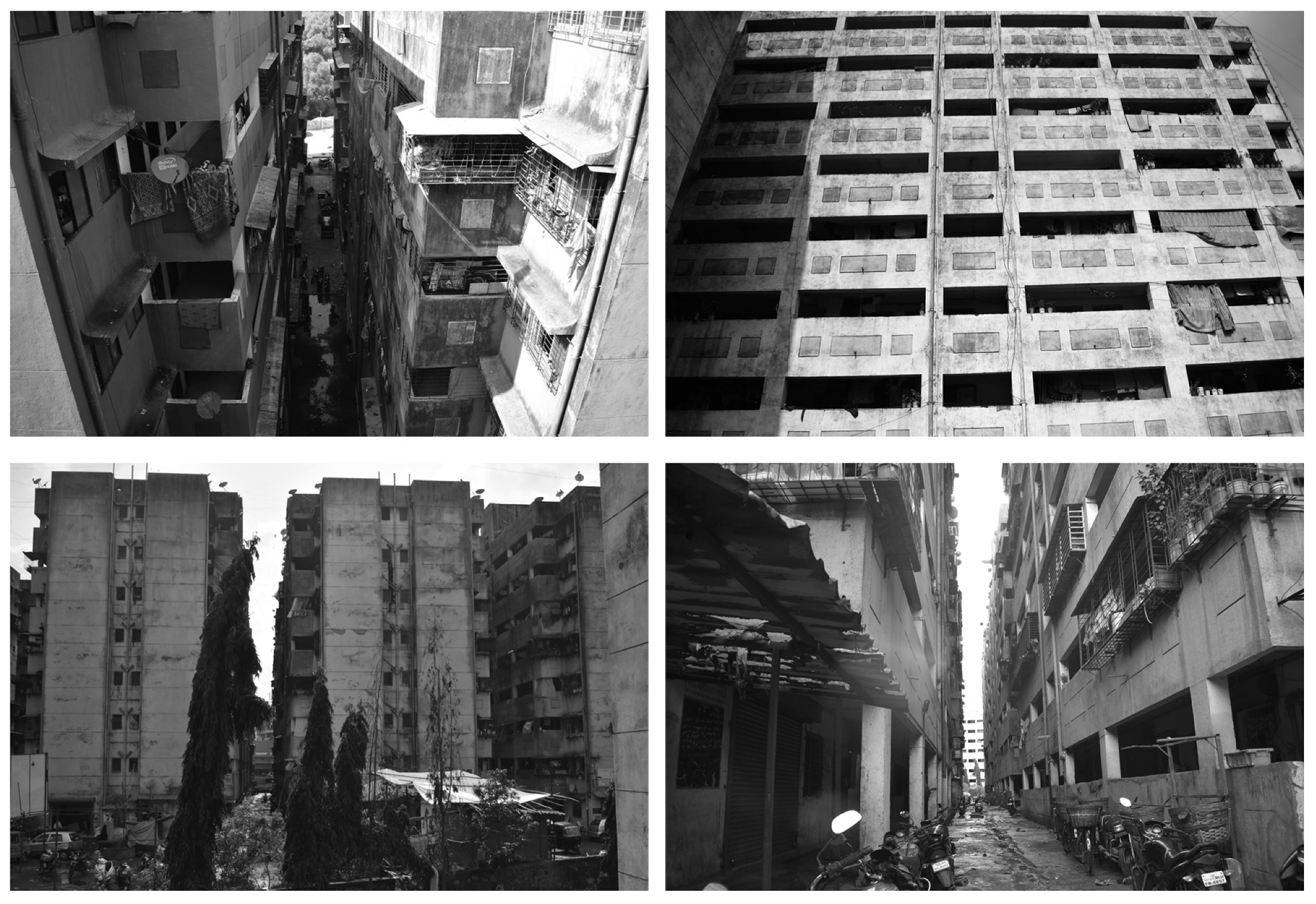
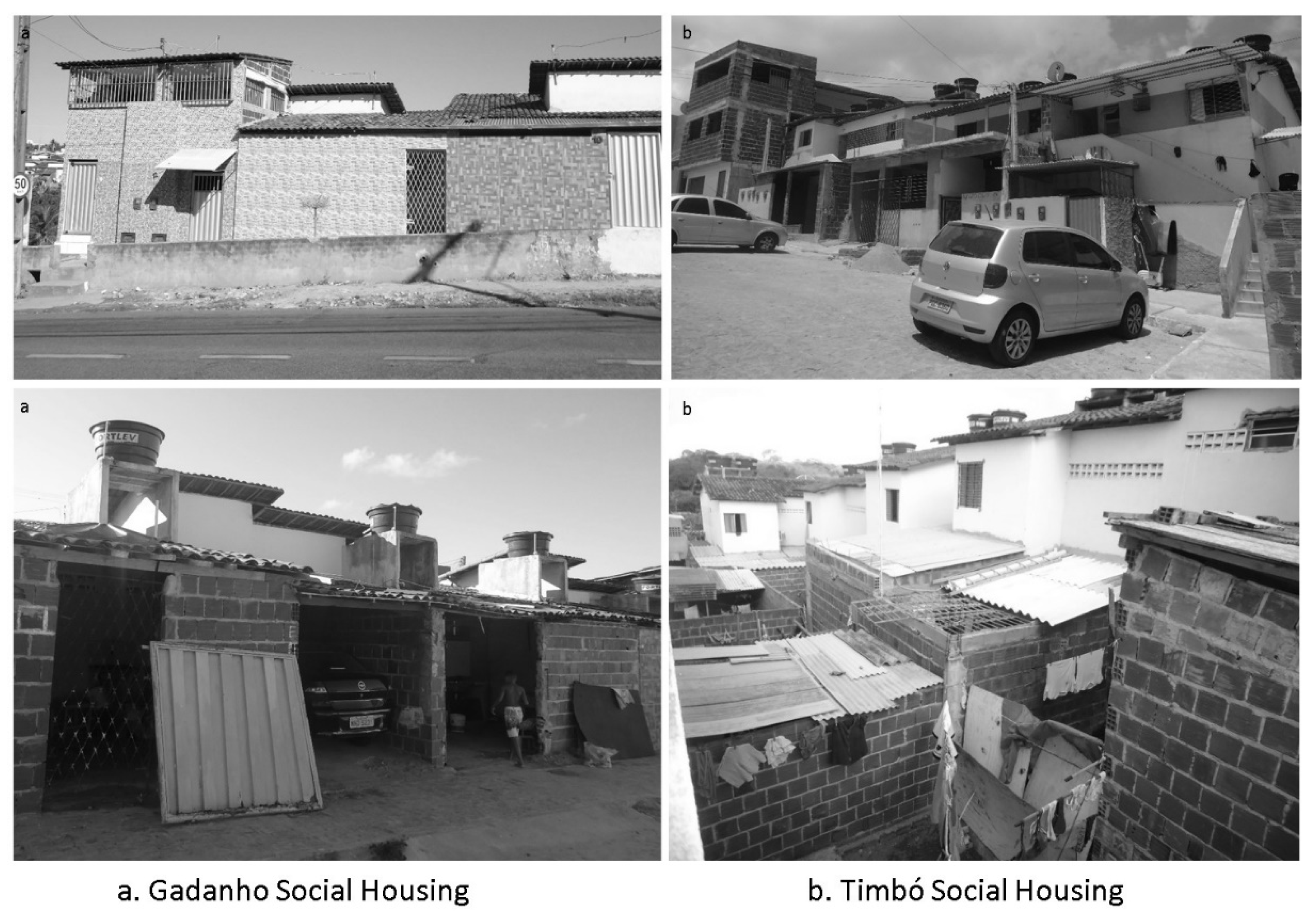

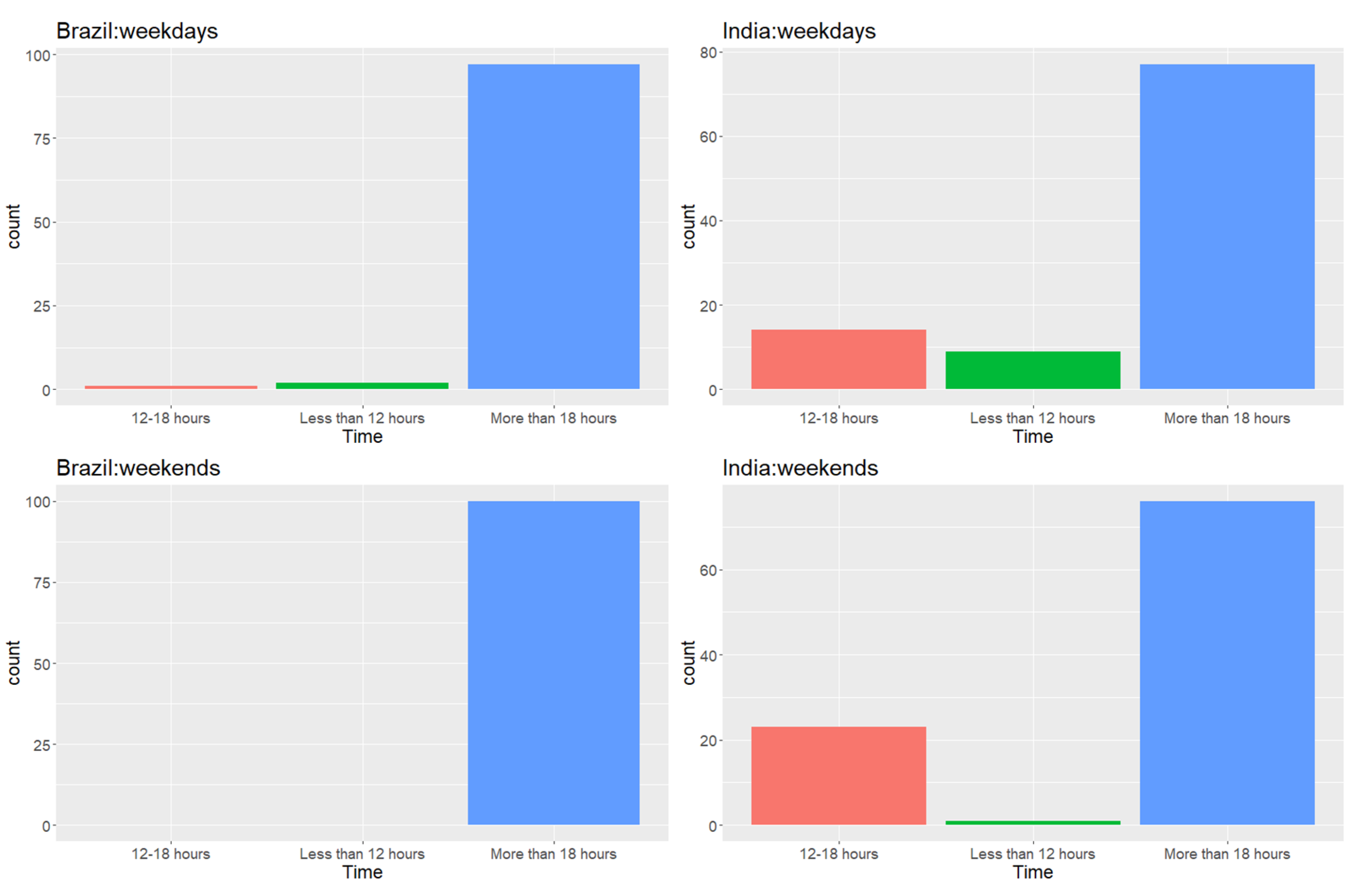
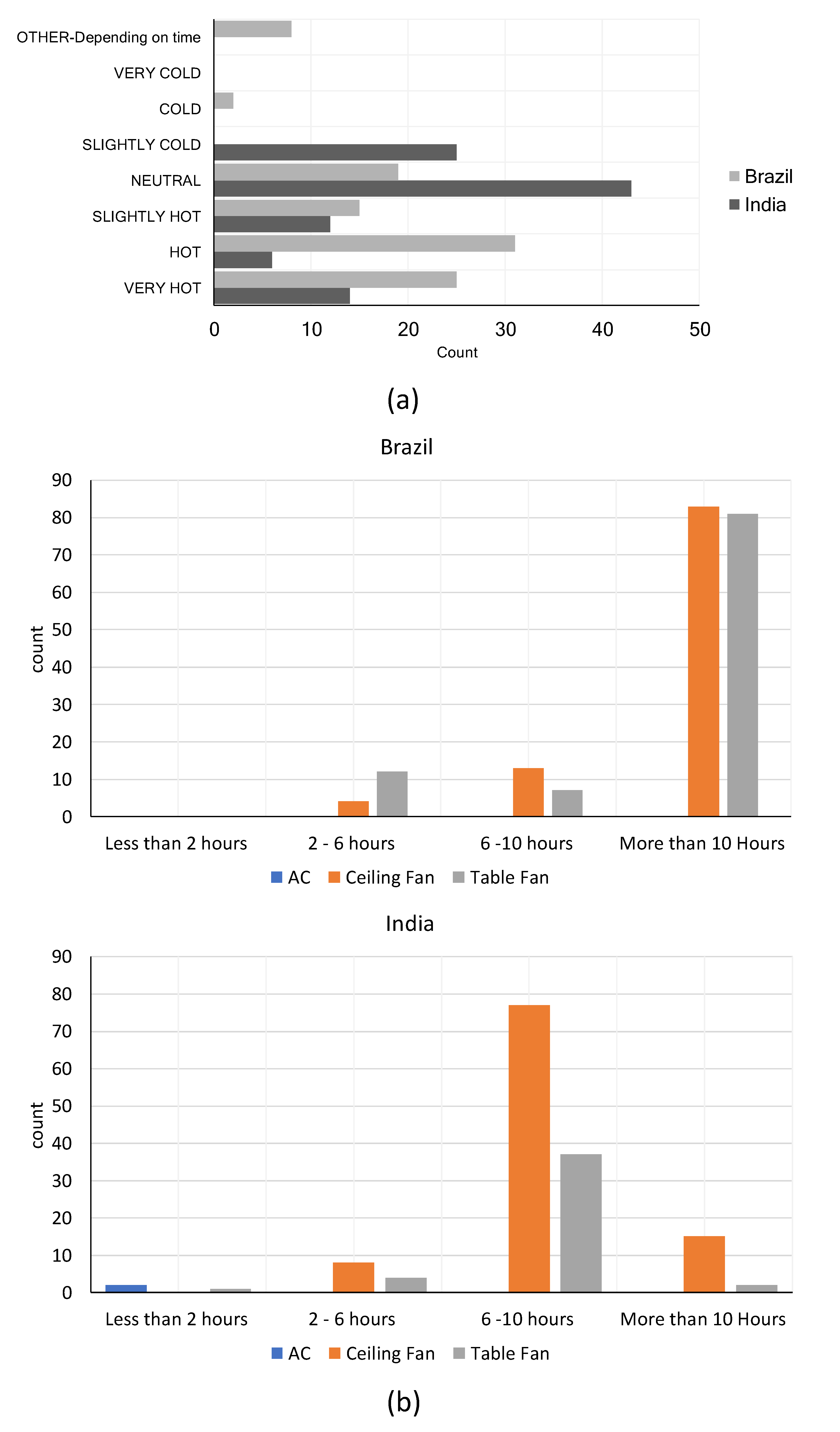
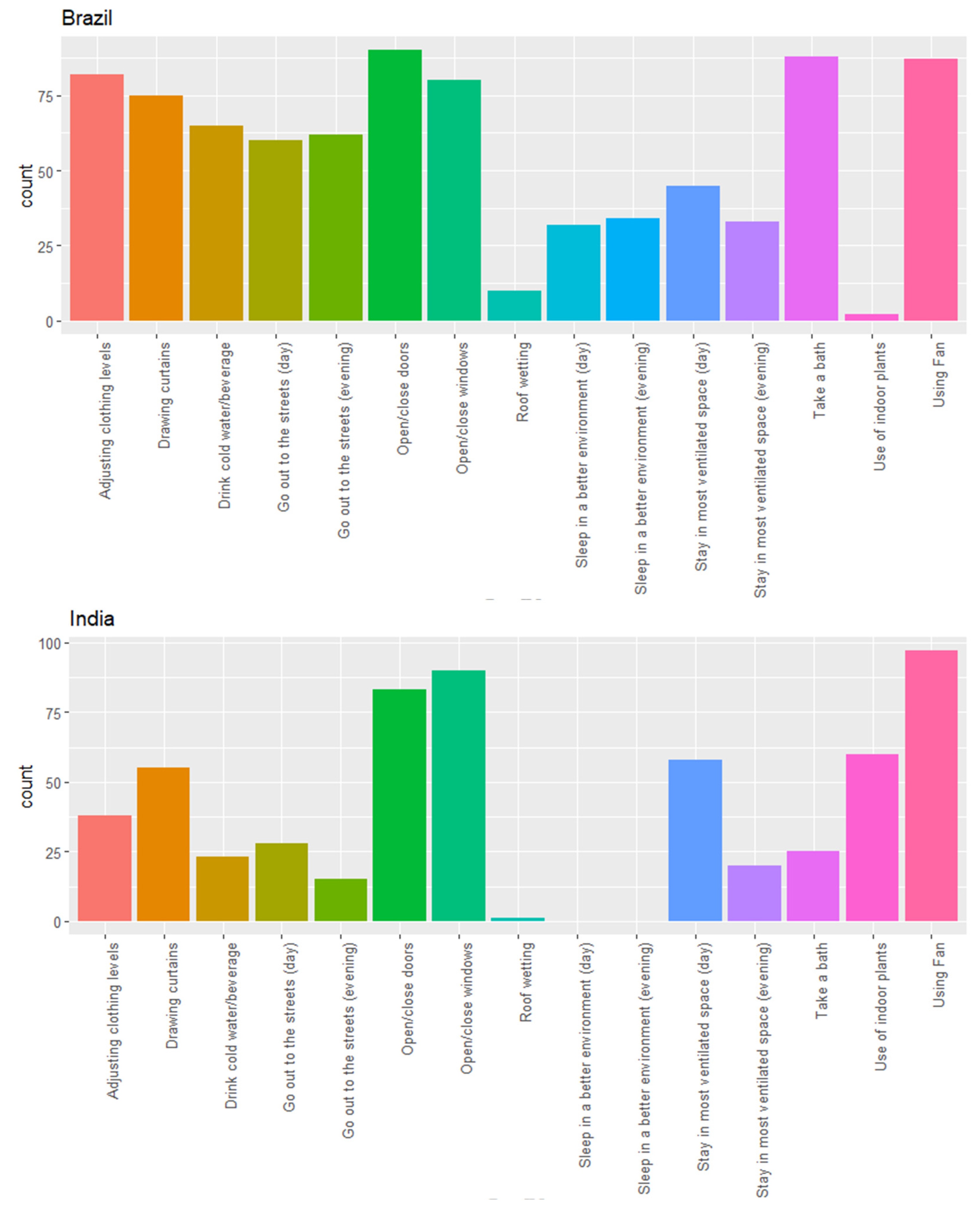
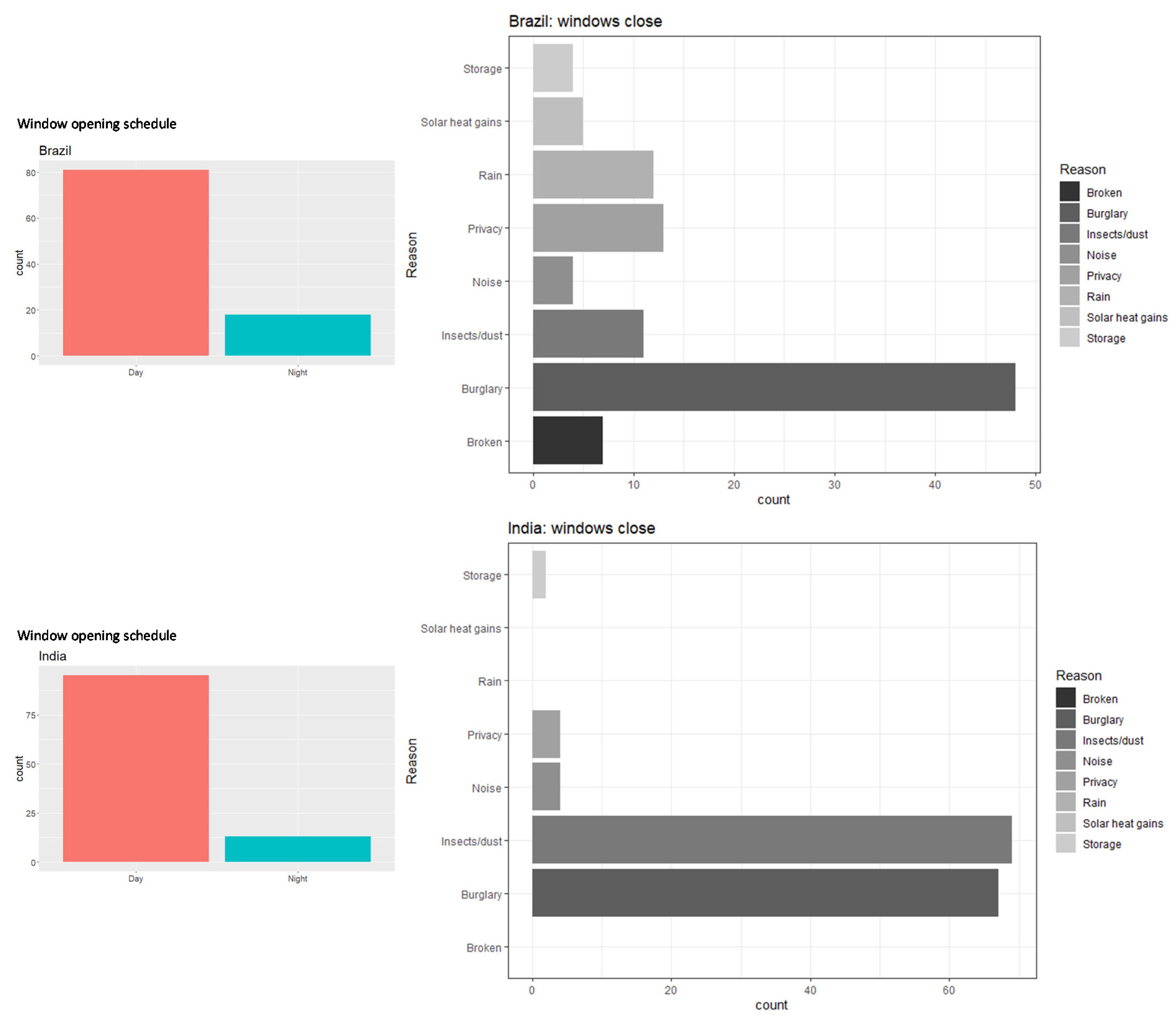
| Cultural Energy Services | Shove’s (2003) [11] Description of the 3Cs as Domains of Energy Consumption in Daily Life | Sovacool’s (2011) [13] Interpretation of the 3Cs as Drivers of Urban Energy Consumption in Daily Life | Appliance Ownership as Material Manifestation of Energy Culture (3Cs) in the Slum Rehabilitation Housing (Authors’ Assumption) |
|---|---|---|---|
| Comfort | A socio-technical system that co-evolved with the industrialisation of indoor climate and increasing energy intensity. It led to a worldwide standardisation of technologies, building styles and conventions, which now dictate the energy culture and the ownership of household appliances. For example: like owning cooling appliances, air conditioners, practices of opening/closing windows, etcetera. | The 3Cs are interpreted as one’s satisfaction with the immediate physical environment, strongly associated with the ability to control indoor climate. It is a critical factor behind the global rise in air conditioning, especially among middle-income consumers. In low-income households, comfort has more economic connotations as income decides comfort outcomes. For example, poor households usually cater to natural ventilation, open spaces or fans for thermal comfort than energy-intensive mechanical cooling devices. | Thermal comfort: Fans and natural ventilation are the most common strategy [23]. Social comfort: Community areas and open spaces for socialising in the built environment. It is crucial for well-being [14]. Mental comfort: Community-feeling and preserving the social network in the built environment [14]. |
| Cleanliness | A co-evolutionary socio-technical and socio-cultural system that emerged from an identity-defining bathing and laundering practices to energy-intensive cleaning and laundering services. For example, change of bathing and hand-washing practices to a washing machine and hot-shower driven energy-intensive practices. It represents the change of cleanliness as a household practice to an industry-driven system of using detergents, washing machines, bathroom-fixtures, ironed-clothes, etcetera, for pleasure and duty. At a neighbourhood/societal scale, cleanliness-services is represented as the maintenance of hygiene and sanitation. | The social aspect of energy services that encompasses unique ideas of the display, disinfection, and deodorization. It also represents the energy need to maintain aesthetics, hygiene and sanitation in a household or a neighbourhood. | Electrification of cleaning regimes at a household-level. For example, aspirational uptake of washing machines as a “modern” device; vacuum cleaners and clothing irons. Better hygiene, safety, and sanitation in the built environment as a crucial need. |
| Convenience | Describe arrangements, devices, or services that helped save or shift time. A consumption culture where commodities and services are sold as being convenient or as making life more convenient for those who use them. There are modern and hypermodern forms of convenience devices that provide people with greater flexibility over their daily schedule that promotes “ease of life” or “welfare”. For example, freezer, coffee maker, juicer, blender, smartphones, microwave ovens, computers/laptops/tablets, etcetera, are categorised as hypermodern devices. Convenience devices help in the branching of daily tasks through multi-tasking or in reducing the time of daily tasks that in turn, increases the demand for further convenience through the purchase of additional appliances. | Convenience can refer to reducing the effort needed to do a job as well as improving the quality of experience, such as watching a recorded show on a smartphone than on a tight television schedule. Lower-cost and enhanced services in today’s age have put paramount importance on the “convenience” factor of owning an appliance. Services are needed round the clock and in an “instant”. This demand for energy services is a primary reason for the rapid rise of energy demand in emerging economies like China and India, especially among middle-income consumers. | Uptake of hyper-modern appliances that saves time. It adds to the household welfare, especially to the women of the household by saving time from their daily chores [24]. For example, refrigerators, washing machine, microwave oven, coffee machine, mixer grinder, juicer, vacuum cleaners, etcetera Information and communication technology devices (ICT) like smartphones, TVs, Wi-Fi, laptops, computers, tablets, etcetera. |
| Sl. No. | Survey Variables | Classification Category | Variable Type | Interconnected Energy-Culture Domains and Descriptions |
|---|---|---|---|---|
| A1 | Total appliance ownership | Energy use | Continuous | Material reality |
| A2 | Appliances owned | Energy use | Dichotomous (1 = Yes, 0 = No) | Norms and aspirations Comfort (thermal): Fan, air conditioners, air coolers, etcetera. Cleanliness: Vacuum cleaners, geysers, clothing irons, etcetera. Convenience: Welfare appliances: Washing machine and refrigerators Hyper-modern appliances: Microwave ovens, coffee machine, juicer, mixer-grinder, food mixer, DVD players, Smartphones, TVs, laptop, computer, tablets, etcetera. |
| A3 | Time spent at home in weekdays | Socio-cultural | Ordinal (1 = less than 12 h; 2 = 12–18 h; 3 = more than 18 h) | Practice |
| A4 | Time spent at home in weekends | Socio-cultural | Ordinal (1 = less than 12 h; 2 = 12–18 h; 3 = more than 18 h) | Practice |
| A5 | Thermal comfort perception at home as compared to horizontal slum | Built environment | Ordinal (1 = very cold; 2 = cold; 3 = slightly cold; 4 = neutral; 5 = slightly hot; 6 = hot; 7 = very hot; 8 = cannot answer; 9 = depending on the time) | Material reality |
| A6 | Strategies to improve thermal comfort | Socio-cultural and built environment | Dichotomous (1 = Yes, 0 = No) | Practice |
| A7 | Fan usage time at home | Socio-cultural | Ordinal (0 = Do not use/there is not, 1 = less than 12 h; 2 = 12–18 h; 3 = more than 18 h) | Practice |
| A8 | Window opening schedule (Day/Night) | Socio-cultural | Dichotomous (1 = Yes, 0 = No) | Practice |
| A9 | Reasons for keeping the windows closed | Built environment | Dichotomous (1 = Yes, 0 = No) | Material reality Lack of privacy; Risk of burglary; Entry of insect/dust; Used as storage; Noise; Rain; Solar gains; Broken windows |
| Characteristics | SRH, Mumbai, India | GTSH, João Pessoa, Brazil |
|---|---|---|
| Building typology | High-rise (8 floors) | Low-rise (1–2 floors) |
| Built environment | Stacked buildings in a “shoe-box”-like manner. Poor provisioning of sidewalks and open spaces. Lack of hygiene and sanitation. Safety remains a problem. | Housing design was homogenous placed in an industrial manner. Well-defined sidewalks and roads. Safety remains a problem. |
| Floor area (m2) | ~25 | ~37 |
| Spatial placement of rehabilitation houses | Away from slum location. | On the same location as the slums. |
| Average household income | USD 70–140 per month | USD 93.5–180 per month |
| Primary occupation of head of household (HoH) | Labourer in construction industry. | Labourer in waste-recycling industry. |
| Average number of people per household | ~5 | ~4 |
| Average education level of HoH | Middle-school | Middle-school |
| Average household electricity bill | USD 6–10 per month | USD 20–30 per month |
| Average household energy consumption (kWh) | 135 | 192 |
| Low-income electricity tariff program | None | None |
| Typical electricity demand drivers | Cooling (fans only), lighting, and entertainment | Cooling (fans only), lighting, leisure, and entertainment |
| Cooking fuel | Liquefied petroleum gas (LPG), kerosene | Liquefied petroleum gas (LPG) |
| Dependent Variable | Data Type (Binary: 1 = Yes, 0 = No) |
| Cultural energy service type in the study areas (E) (by specific appliance ownership) | (1) Comfort (ceiling fan, table fan, air-conditioners, air-coolers ownership) (2) Cleanliness (vacuum cleaners, geysers, clothing irons) (3) Convenience (Washing machine and refrigerators; microwave ovens, coffee machine, juicer, mixer-grinder, food mixer, DVD players; smartphones, TVs, laptop, computer, tablet) |
| Independent Variable | Dummy Variable (Binary: 1 = Yes, 0 = No) |
| Lack of socio-architectural built environment elements that are crucial for the well-being of occupants in slum rehabilitation housing. | (BE1) Privacy |
| (BE2) Safety | |
| (BE3) Open space/ventilated space access during night-time | |
| (BE4) Walkability during daytime | |
| (BE5) Walkability during night-time |
| Lack of Socio-Architectural Elements | Model 1 (Dependent Variable: Appliance Ownership; Yes = 1, No = 0) | ||
|---|---|---|---|
| Air Conditioners | |||
| β | Sig. | Exp (β) | |
| Privacy | 2.704 | 0.047 * | 14.939 |
| Safety | 1.359 | 0.312 | 3.892 |
| Open space/ventilated space access during night | −2.092 | 0.257 | 0.123 |
| Walkability during day | 1.066 | 0.499 | 2.903 |
| Walkability during night | −0.110 | 0.954 | 0.895 |
| Penalised log likelihood | −11.865 | ||
| Lack of Socio-Architectural Elements | Model 3 (Dependent Variable: Appliance Ownership; Yes = 1, No = 0) | |||||
|---|---|---|---|---|---|---|
| Refrigerator | Clothing Iron | |||||
| β | Sig. | Exp (β) | β | Sig. | Exp (β) | |
| Privacy | −0.895 | 0.358 | 0.408 | −2.320 | 0.080 | 0.098 |
| Safety | −0.659 | 0.142 | 0.517 | 0.460 | 0.325 | 1.584 |
| Open space/ventilated space access during night | −0.857 | 0.381 | 0.424 | 0.515 | 0.600 | 1.673 |
| Walkability during day | 1.649 | 0.049 * | 5.201 | 0.918 | 0.267 | 2.504 |
| Walkability during night | −0.488 | 0.563 | 0.613 | −2.245 | 0.009 ** | 0.105 |
| Penalised log likelihood | −19.069 | −15.998 | ||||
| Lack of Socio-Architectural Elements | Model 1 (Dependent Variable: Appliance Ownership; Yes = 1, No = 0) | |||||
|---|---|---|---|---|---|---|
| Fan (More Than 1) | Water Cooler | |||||
| β | Sig. | Exp (β) | β | Sig. | Exp (β) | |
| Privacy | 0.274 | 0.661 | 1.315 | 1.240 | 0.154 | 3.455 |
| Safety | −0.513 | 0.237 | 0.598 | −1.063 | 0.231 | 0.345 |
| Open space/ventilated space access during night | −0.593 | 0.179 | 0.552 | −1.793 | 0.133 | 0.166 |
| Walkability during day | 1.689 | 0.046 * | 5.414 | −0.888 | 0.491 | 0.411 |
| Walkability during night | −1.284 | 0.199 | 0.276 | 2.928 | 0.036 * | 18.690 |
| Penalised log likelihood | −29.204 | −17.683 | ||||
| Lack of Socio-Architectural Elements | Model 3 (Dependent Variable: Appliance Ownership; Yes = 1, No = 0) | ||||||||
|---|---|---|---|---|---|---|---|---|---|
| Microwave Ovens | Washing Machines | Radio | |||||||
| β | Sig. | Exp (β) | β | Sig. | Exp (β) | β | Sig. | Exp (β) | |
| Privacy | −0.763 | 0.292 | 0.466 | −0.389 | 0.531 | 0.677 | −1.914 | 0.138 | 0.147 |
| Safety | −1.284 | 0.01 * | 0.276 | −0.257 | 0.554 | 0.773 | −2.148 | 0.106 | 2.166 |
| Open space/ventilated space access during night | −0.676 | 0.179 | 0.508 | 0.317 | 0.047 * | 1.373 | 0.935 | 0.537 | 2.54 |
| Walkability during day | 1.091 | 0.420 | 2.986 | 0.797 | 0.201 | 2.21 | −5.324 | 0.025 * | 0.004 |
| Walkability during night | −1.056 | 0.443 | 0.347 | 0.421 | 0.359 | 1.523 | 1.325 | 0.031 * | 3.758 |
| Penalised log likelihood | −19.069 | −29.287 | −8.709 | ||||||
© 2020 by the authors. Licensee MDPI, Basel, Switzerland. This article is an open access article distributed under the terms and conditions of the Creative Commons Attribution (CC BY) license (http://creativecommons.org/licenses/by/4.0/).
Share and Cite
Debnath, R.; Simoes, G.M.F.; Bardhan, R.; Leder, S.M.; Lamberts, R.; Sunikka-Blank, M. Energy Justice in Slum Rehabilitation Housing: An Empirical Exploration of Built Environment Effects on Socio-Cultural Energy Demand. Sustainability 2020, 12, 3027. https://doi.org/10.3390/su12073027
Debnath R, Simoes GMF, Bardhan R, Leder SM, Lamberts R, Sunikka-Blank M. Energy Justice in Slum Rehabilitation Housing: An Empirical Exploration of Built Environment Effects on Socio-Cultural Energy Demand. Sustainability. 2020; 12(7):3027. https://doi.org/10.3390/su12073027
Chicago/Turabian StyleDebnath, Ramit, Gianna Monteiro Farias Simoes, Ronita Bardhan, Solange Maria Leder, Roberto Lamberts, and Minna Sunikka-Blank. 2020. "Energy Justice in Slum Rehabilitation Housing: An Empirical Exploration of Built Environment Effects on Socio-Cultural Energy Demand" Sustainability 12, no. 7: 3027. https://doi.org/10.3390/su12073027
APA StyleDebnath, R., Simoes, G. M. F., Bardhan, R., Leder, S. M., Lamberts, R., & Sunikka-Blank, M. (2020). Energy Justice in Slum Rehabilitation Housing: An Empirical Exploration of Built Environment Effects on Socio-Cultural Energy Demand. Sustainability, 12(7), 3027. https://doi.org/10.3390/su12073027





